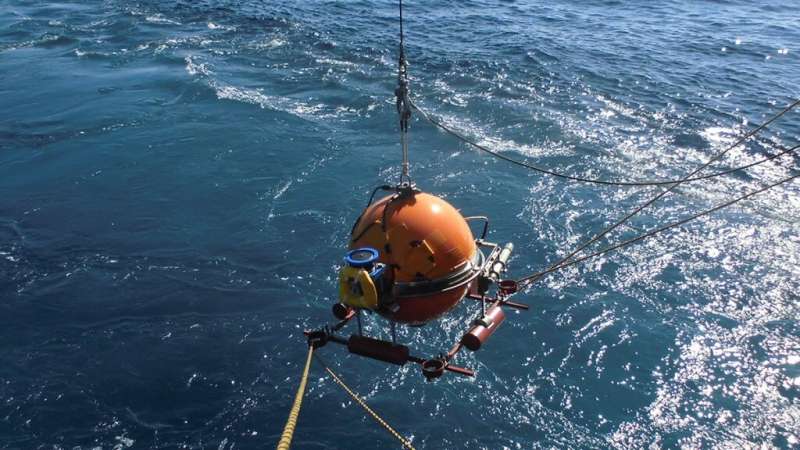This article has been reviewed according to Science X's editorial process and policies. Editors have highlighted the following attributes while ensuring the content's credibility:
fact-checked
peer-reviewed publication
proofread
Small-scale convection shuffles the oceanic lithosphere, finds study

The oceanic lithosphere forms at the summit of ocean ridges during seafloor spreading. Still, the formation of ocean basins is complex, influenced by smaller-scale convection, stagnated pieces of the lithosphere, and tectonic motion from nearby plates. These factors can produce a solid, outer layer of Earth with different structures at different depths.
In a new study, Ai et al. discovered that the Japan Basin in the Sea of Japan has two distinct layers. Their findings suggest that the basin formed through seafloor spreading. However, it was bifurcated and reorganized later by small-scale mantle convection.
The researchers used ocean bottom seismometers to collect earthquake waves, create a structural model, and see into the depths of the lithosphere.
They discovered a distinct discontinuity in the midlithosphere. Toward the surface, seismic wave speed differed depending on its direction—a phenomenon called seismic anisotropy. However, this directional preference attenuated deeper toward the mantle.
They attribute these differences to the structure of the lithosphere. The minerals in the upper lithosphere were neatly organized in a fashion called lattice-preferred orientation, which the team says formed during seafloor spreading 20–15 million years ago. That directionality in the mineral's organization produces seismic anisotropy.
After seafloor spreading ceased, small-scale convection in the mantle shuffled the organization of the innermost lithosphere. The now-jumbled organization of minerals reduces the anisotropy at the lithosphere-mantle boundary. Similar small-scale convection could be randomizing the orientation of minerals in regions experiencing seafloor spreading today, the authors say.
The findings are published in the Journal of Geophysical Research: Solid Earth.
More information: Sanxi Ai et al, Layered Evolution of the Oceanic Lithosphere Beneath the Japan Basin, the Sea of Japan, Journal of Geophysical Research: Solid Earth (2023). DOI: 10.1029/2022JB025581
Journal information: Journal of Geophysical Research
Provided by Eos
This story is republished courtesy of Eos, hosted by the American Geophysical Union. Read the original story here.



















